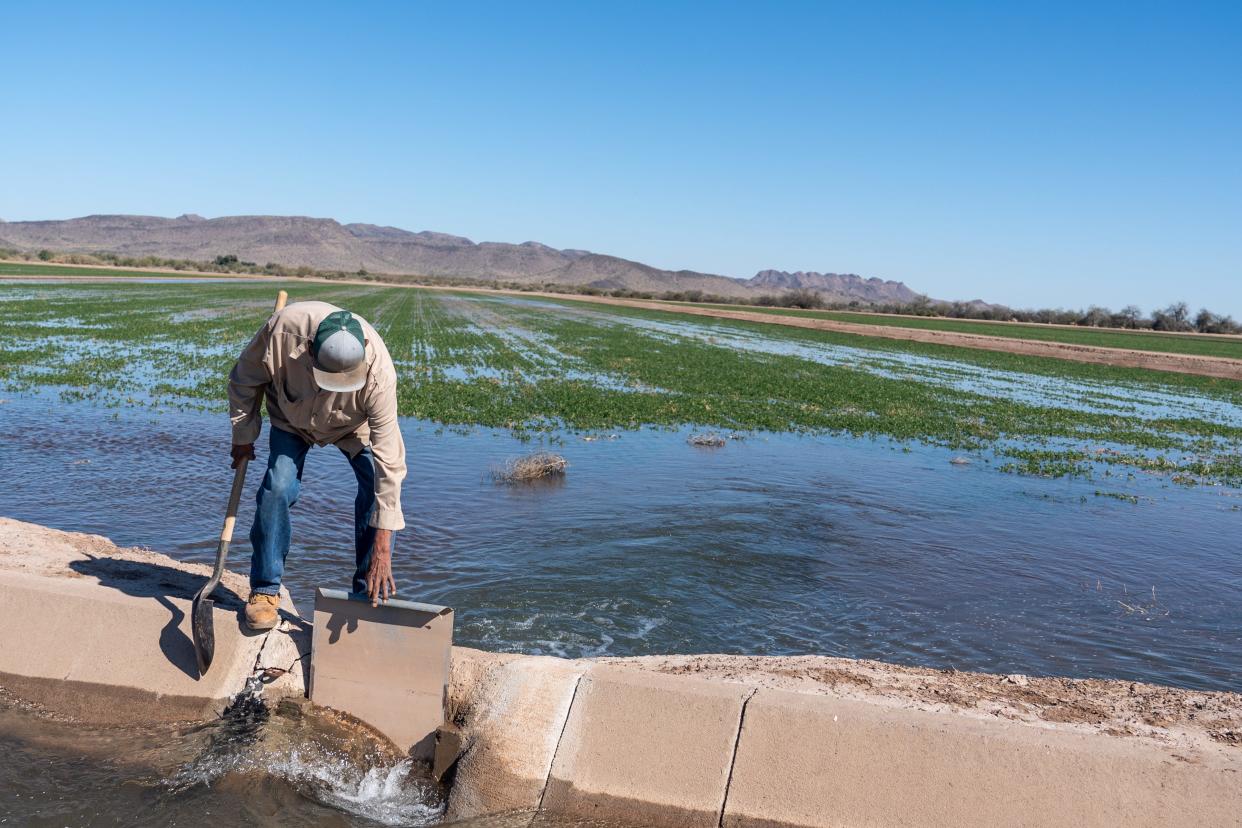Who 'deserves' Arizona's water? Our future rests on this and 3 other questions

The headlines are alarming.
Residential wells are going dry in Willcox. A community near Scottsdale will soon lose its sole source of water. Lake Mead, a significant source of water for Arizona, is already in shortage and expected to go lower, forcing even more painful cuts on central Arizona cities.
How do we make sense of all this bad news?
Here are four fundamental questions to consider about Arizona’s water supply. Hopefully, they’ll challenge your thinking about this precious resource as much as they have mine:
Who 'deserves' the water we have?
Arizona does not have enough water for everyone. So, who “deserves” to use what we have?
You can see this question playing out in central Arizona’s attempt to lease water from the counties that border the Colorado River, in the debate over how to preserve farmland, and whether golf courses, water parks and grass are valid uses of water. (Come to think of it, it’s also a driving force behind the following three questions in this column.)
It’s easy to suppose that how I use water is valid, but how others use it is not. Just give me mine, and you can figure out how to find yours.
And it’s true: There are no perfect solutions when valid uses compete for the same, limited water sources. Even the best compromises will have winners and losers.
But this doesn’t have to be a zero-sum game.
Arizona is at its best when we find ways to balance competing uses, make mutual sacrifices and know when to take a deal we may not love, but at least can live with.
How do we handle growth?
Why don’t we just cut off new growth? I often hear this question, and I get it: If we don’t have enough water for everyone, it doesn’t seem fair to prioritize those who haven’t yet moved here over those who already call Arizona home.
But it’s not that simple.
Growth has been decoupled from increased water use for years in Arizona. We are now using less water than we did in the 1950s, despite our population having multiplied many times over since then.
That’s mostly because homes have replaced sprawling farmland, but also because farmers are using more efficient irrigation techniques. And homes are now being built on smaller lots, which saves water because most residential use is outdoors.
Does that mean we continue to grow into the hinterlands, or is there another way to provide the affordable housing we need? That’s the conversation we should be having: Where and how we grow, but not whether.
How do we use less water?
Arizona needs to use less water. There is more we could do to help people use less.
But what’s the best way to conserve?
Consider California, which mandated water-saving measures during its last drought. The practice worked – the state saved water, and in many areas, the savings have been ongoing. People took advantage of rebates to convert turf or upgrade appliances, lowering their bills and keeping their yards from looking unsightly when they couldn’t irrigate.
But that also took out the easy fixes, the things people could do without changing their behavior.
Now that drought has returned, California has asked residents to save even more. But the savings aren’t even close to reaching targets. Some areas are now using more water than they were a year ago.
This is a tricky balance – and a reminder that if people aren’t on board to make these sacrifices, neither voluntary nor mandatory measures are likely to make a lasting difference.
How do we find new supplies?
As important as it is to conserve the water we have, we’re also going to need new sources of water. We’ve been talking about this for decades.
Should we pursue ocean water desalination? Brackish desalination, which removes salt from groundwater? Water recycling? Something else?
This is a fine debate, but it’s just theory. Projects have not been fleshed out with the necessary location, cost and delivery details to know how much they would help Arizona. (Remember: There’s an unused desalting plant in Yuma that no one wants to update).
The governor and some lawmakers have proposed creating an Arizona Water Authority and seeding it with $1 billion, in hopes that it will finally catalyze some of these projects (and potentially store the water they will produce if users are unwilling, in the short term, to pay its higher cost).
It’s a worthy idea – again, in theory. But we also haven’t given this proposed authority much guidance on how to prioritize projects. And that gives some of us heartburn.
Because this – like virtually everything else in our water future – requires a balancing act between competing interests.
There are no silver bullets or simple solutions to shore up our supplies, just a lot of sacrifice and compromise to find a more sustainable path.
If we agree that getting there is not a zero-sum game.
Reach Allhands at joanna.allhands@arizonarepublic.com. On Twitter: @joannaallhands.
If you love this content (or love to hate it – hey, I won't judge), why not subscribe to get more?
This article originally appeared on Arizona Republic: Arizona's water future hinges on how we answer these questions

